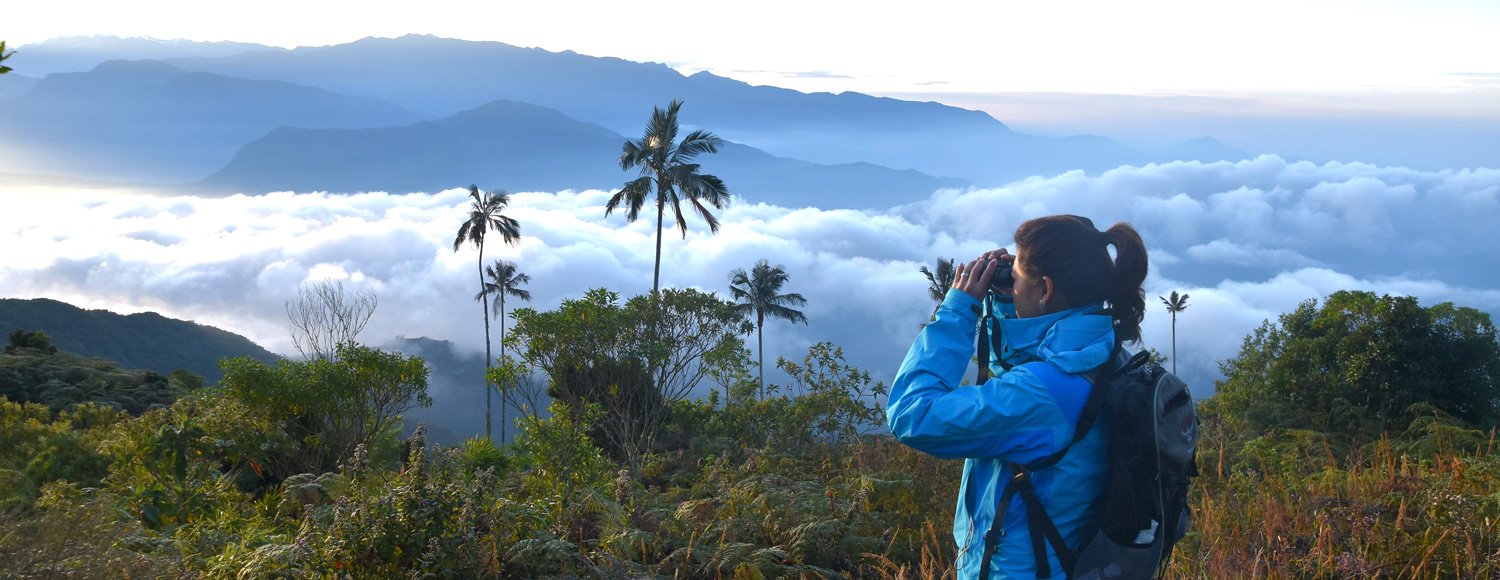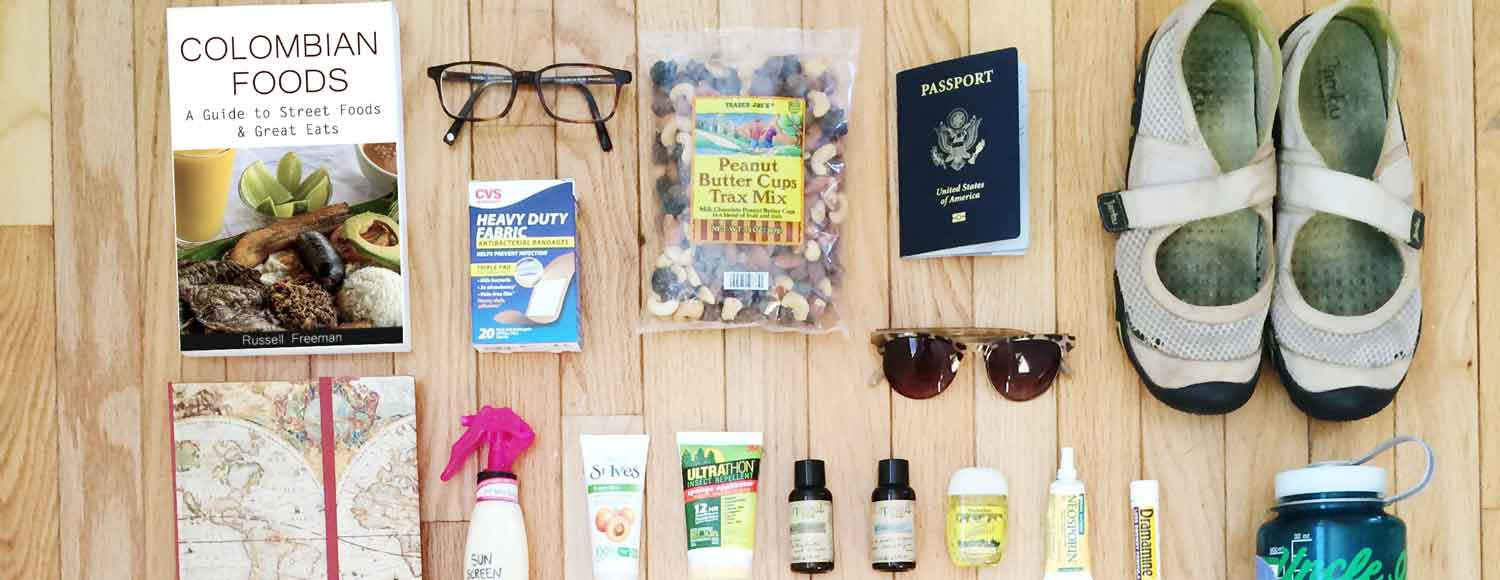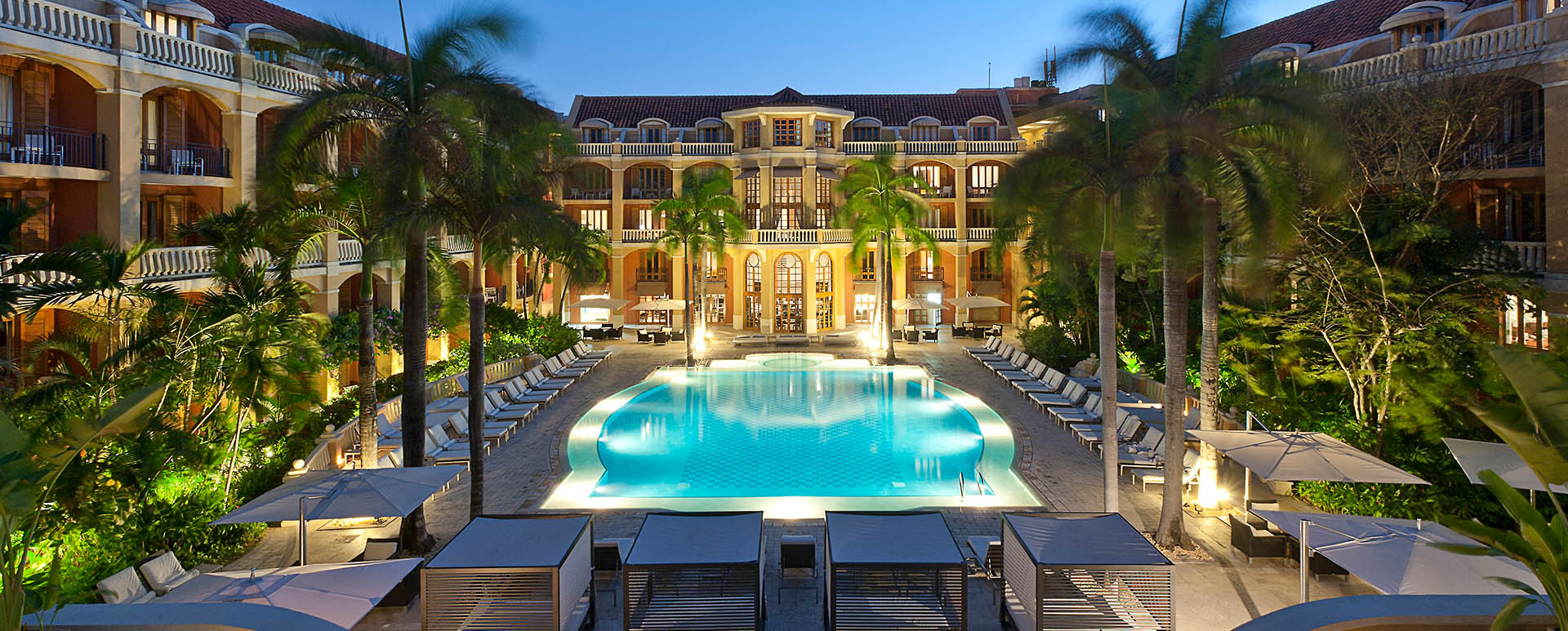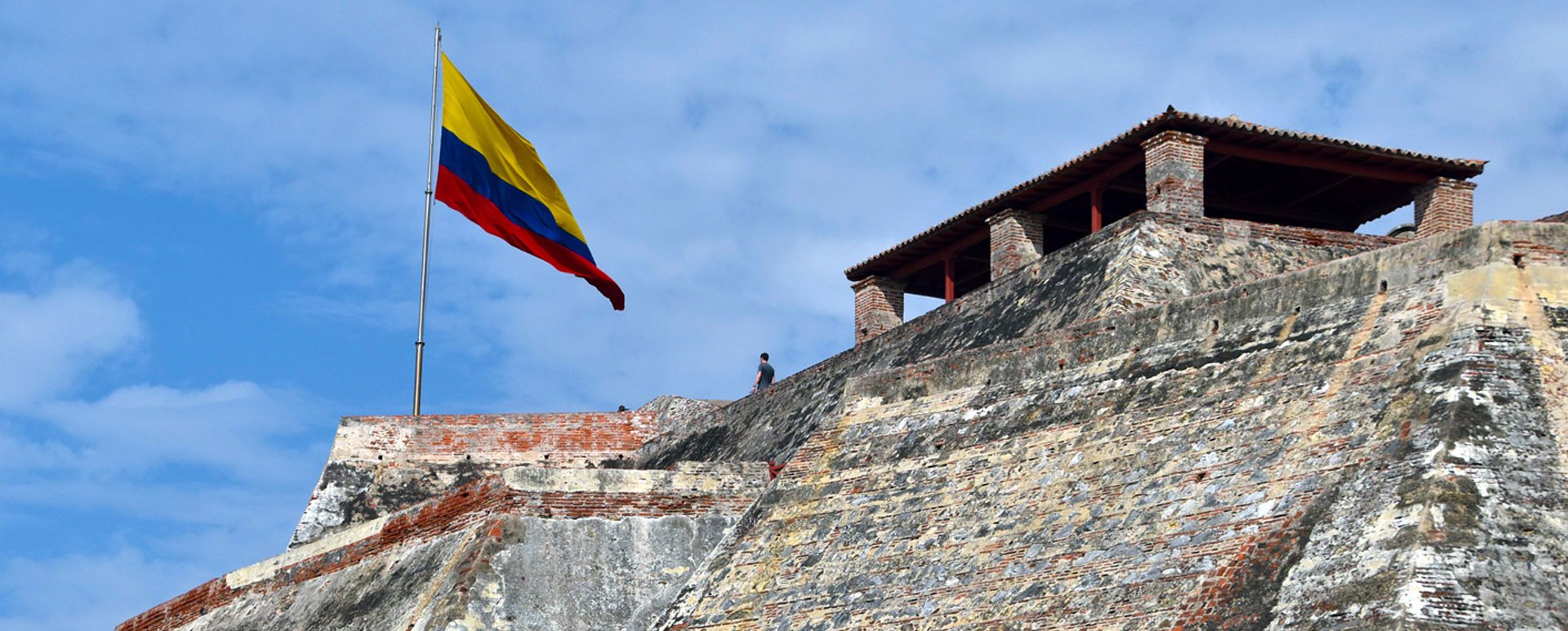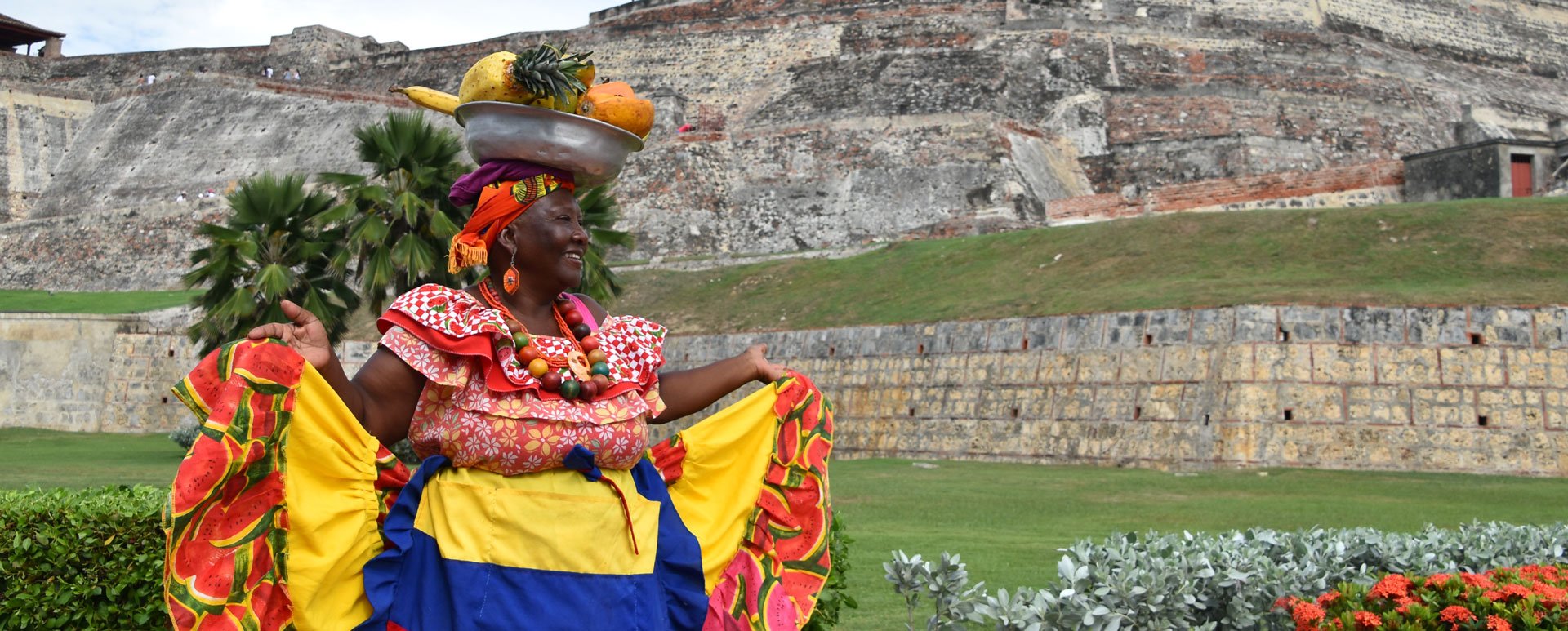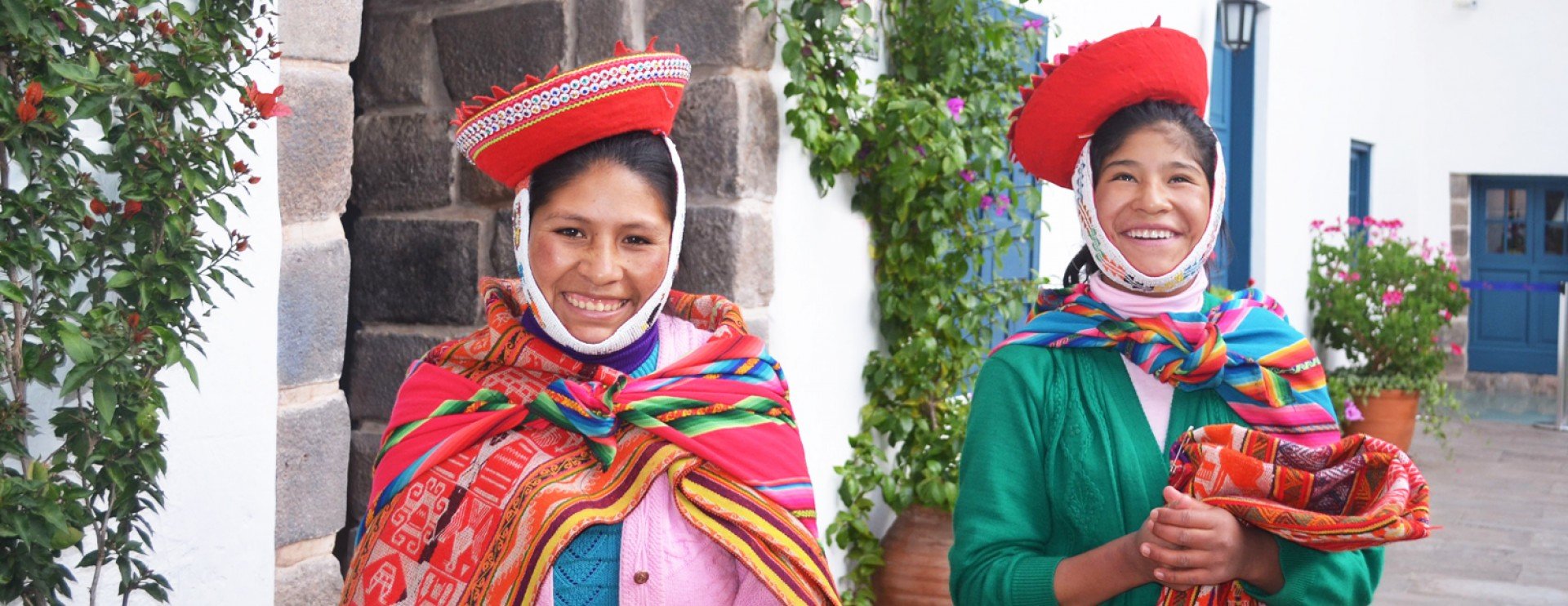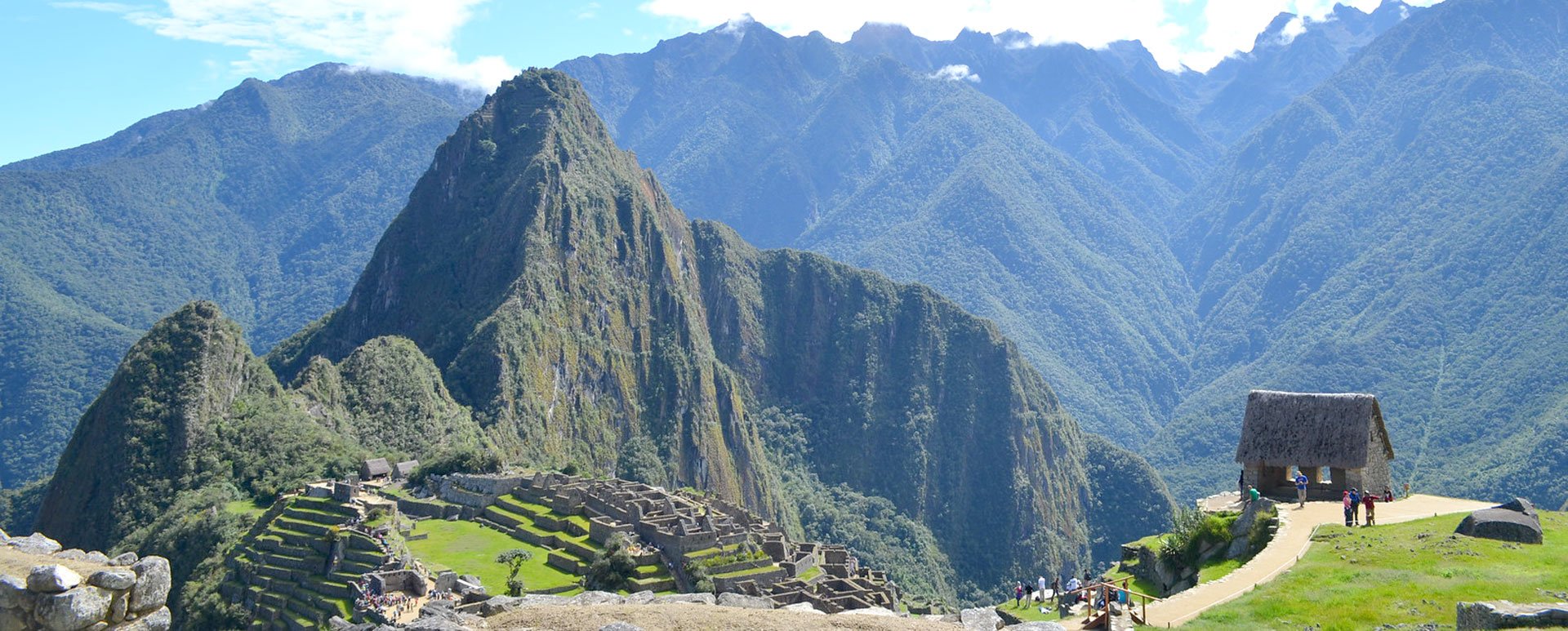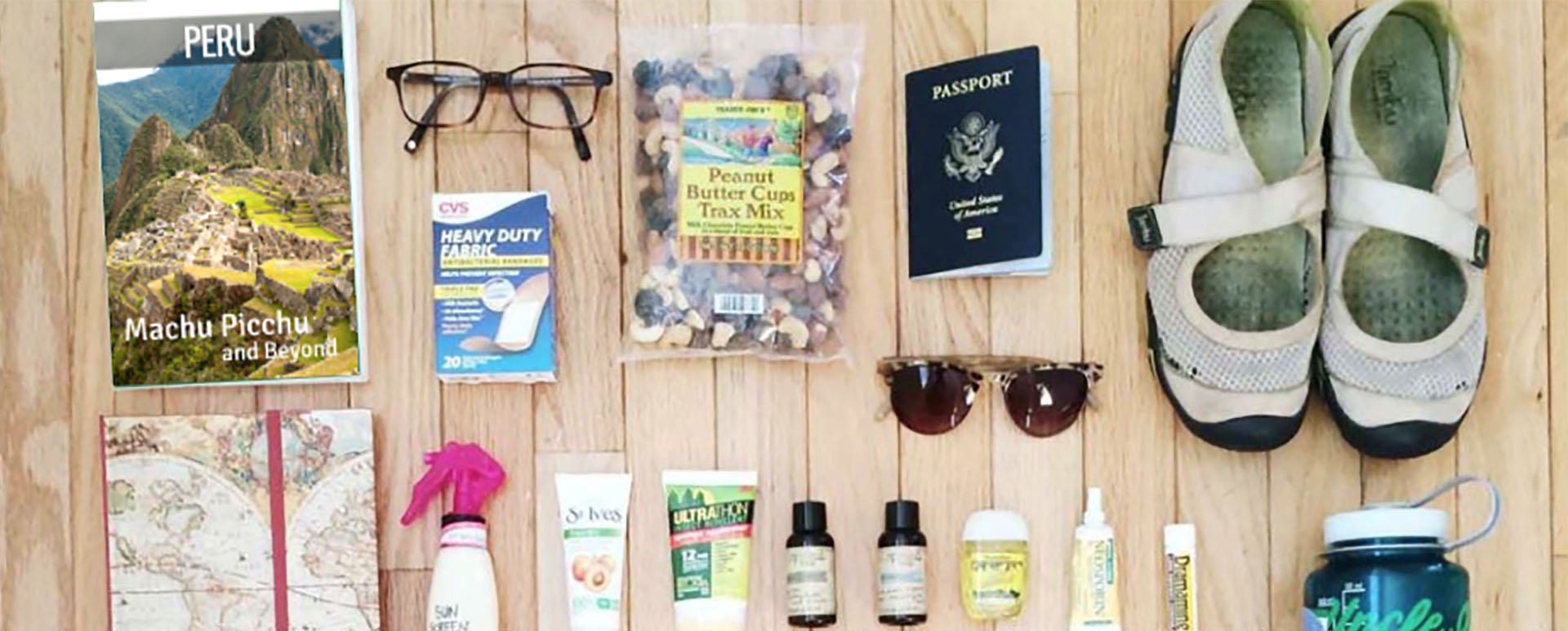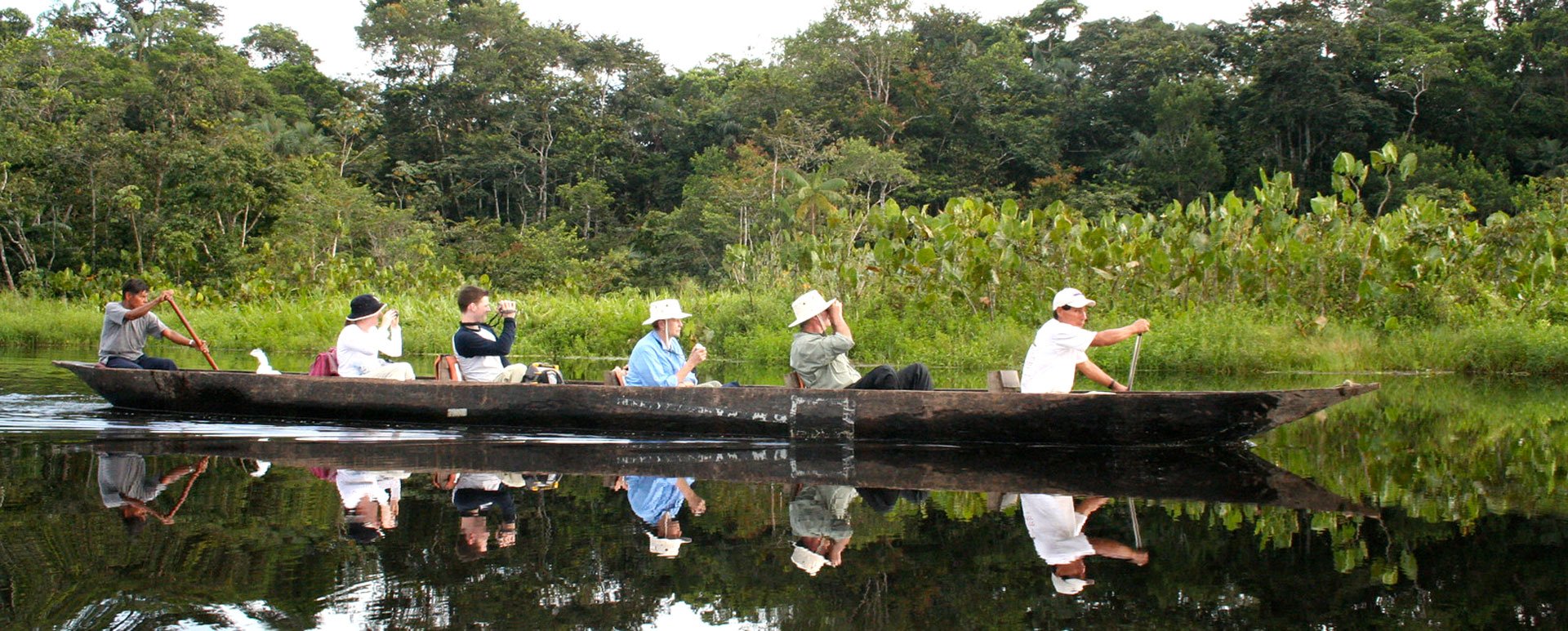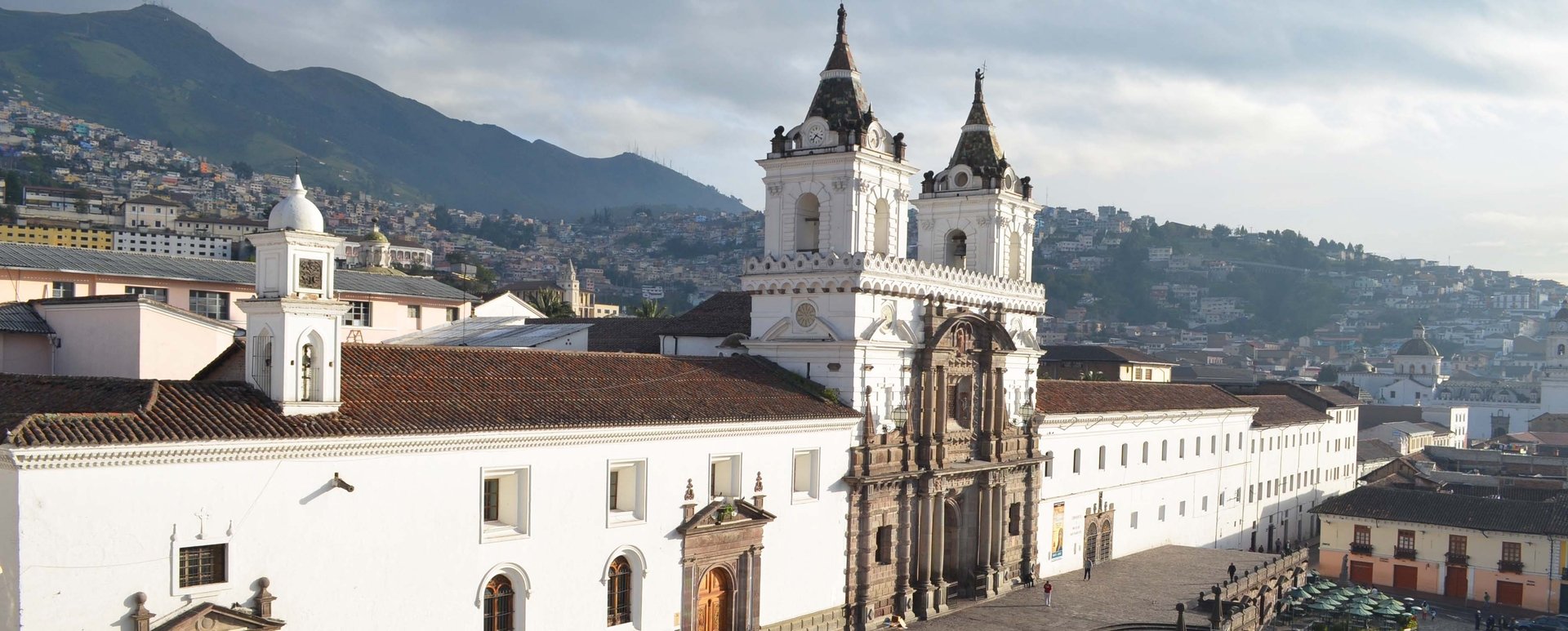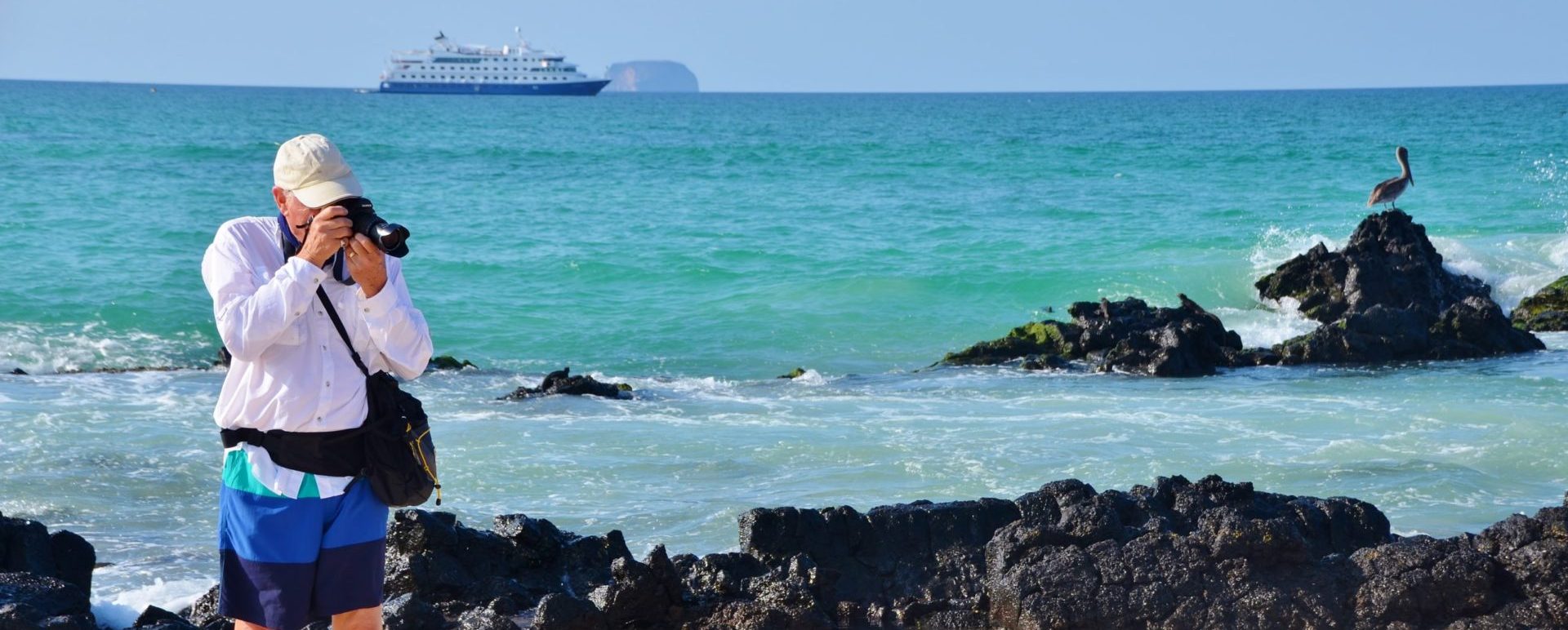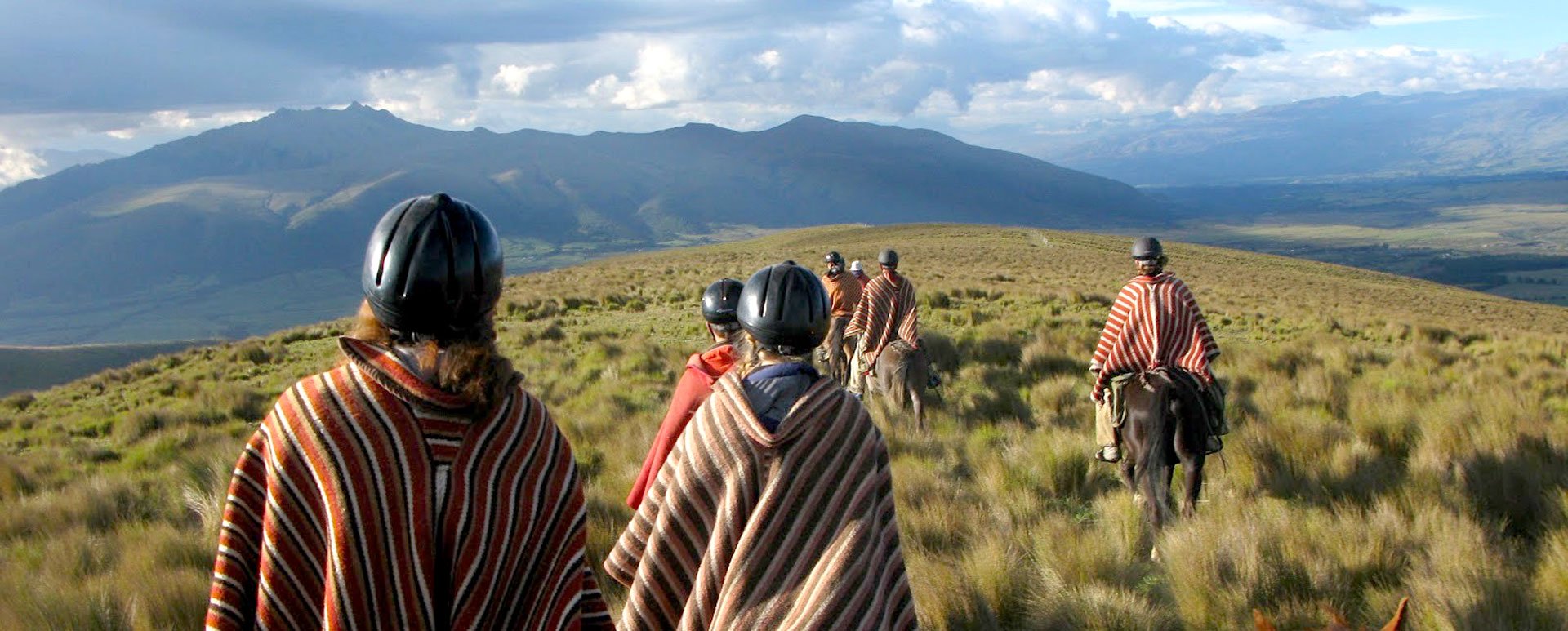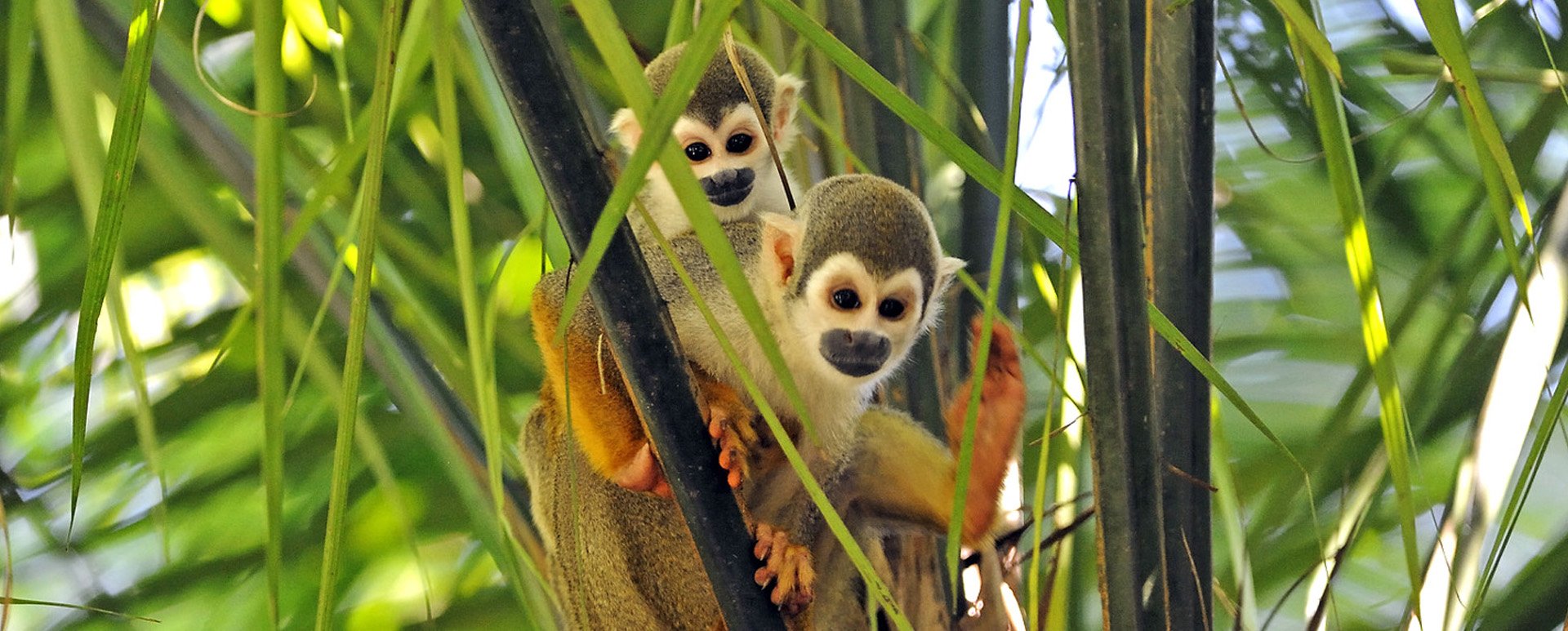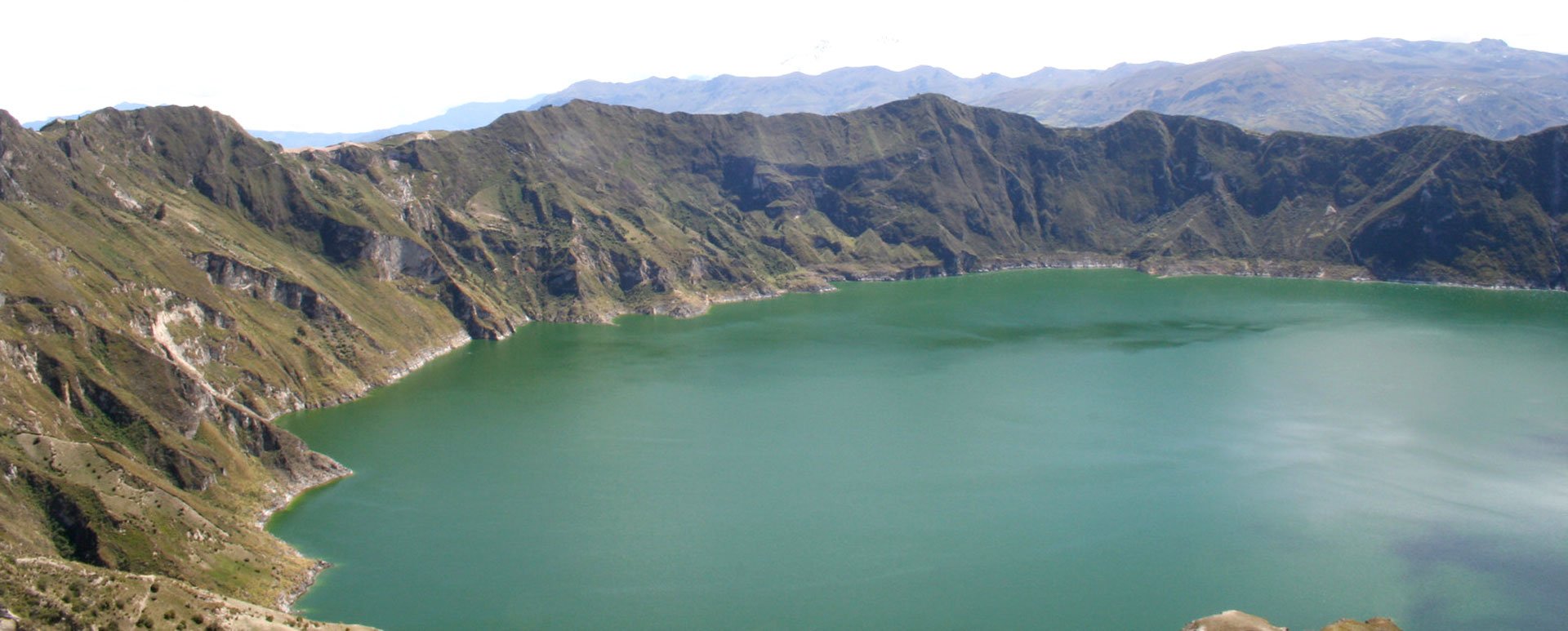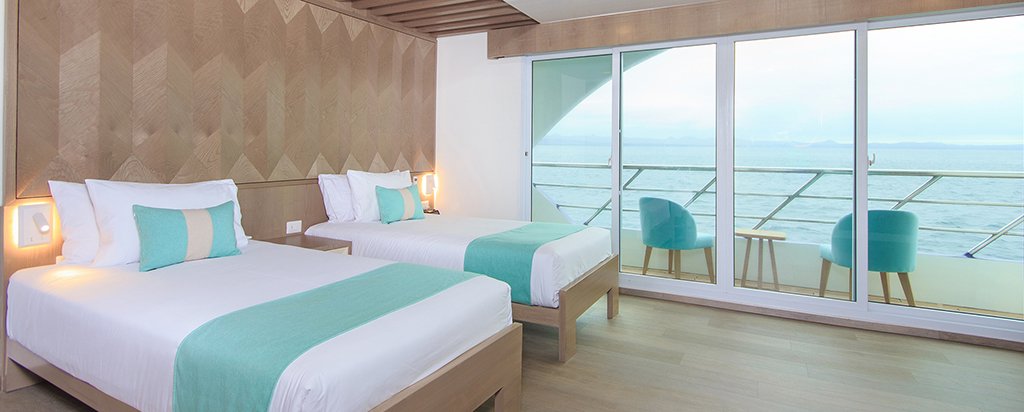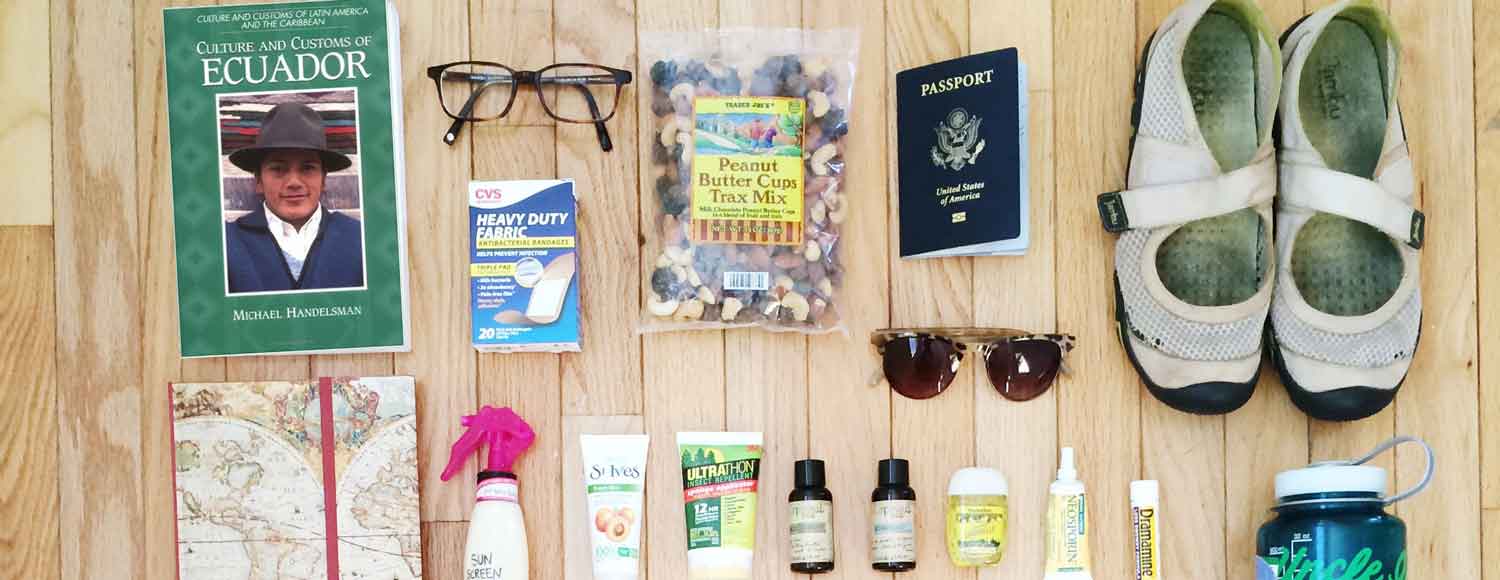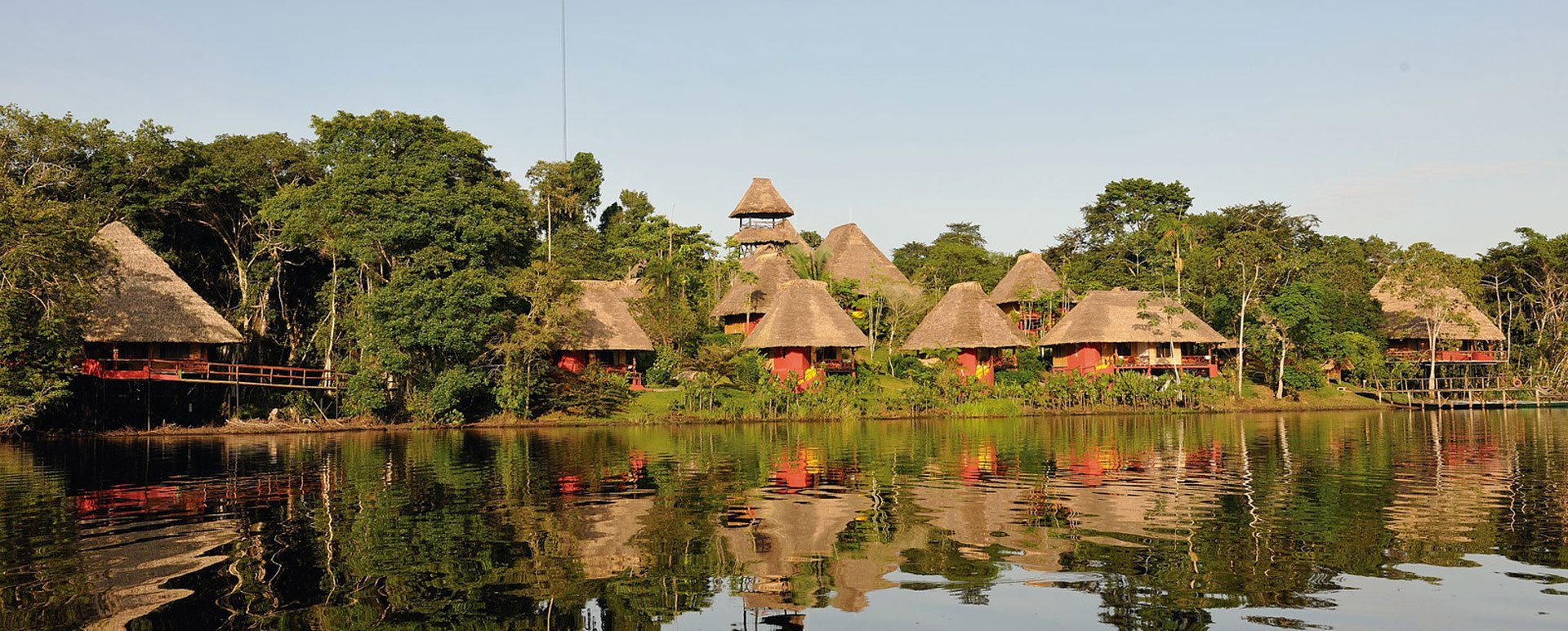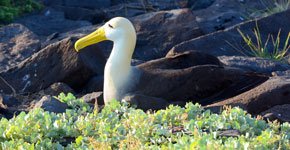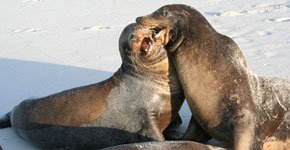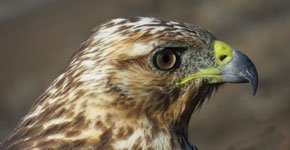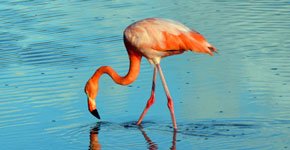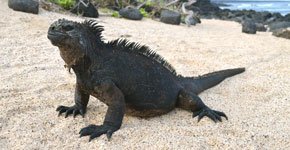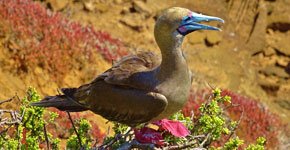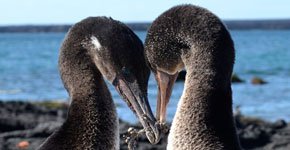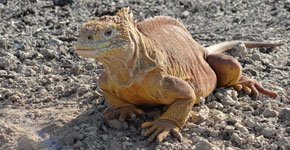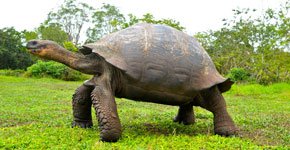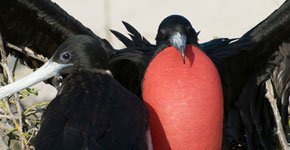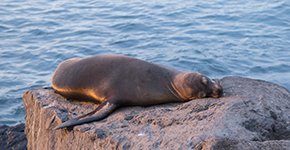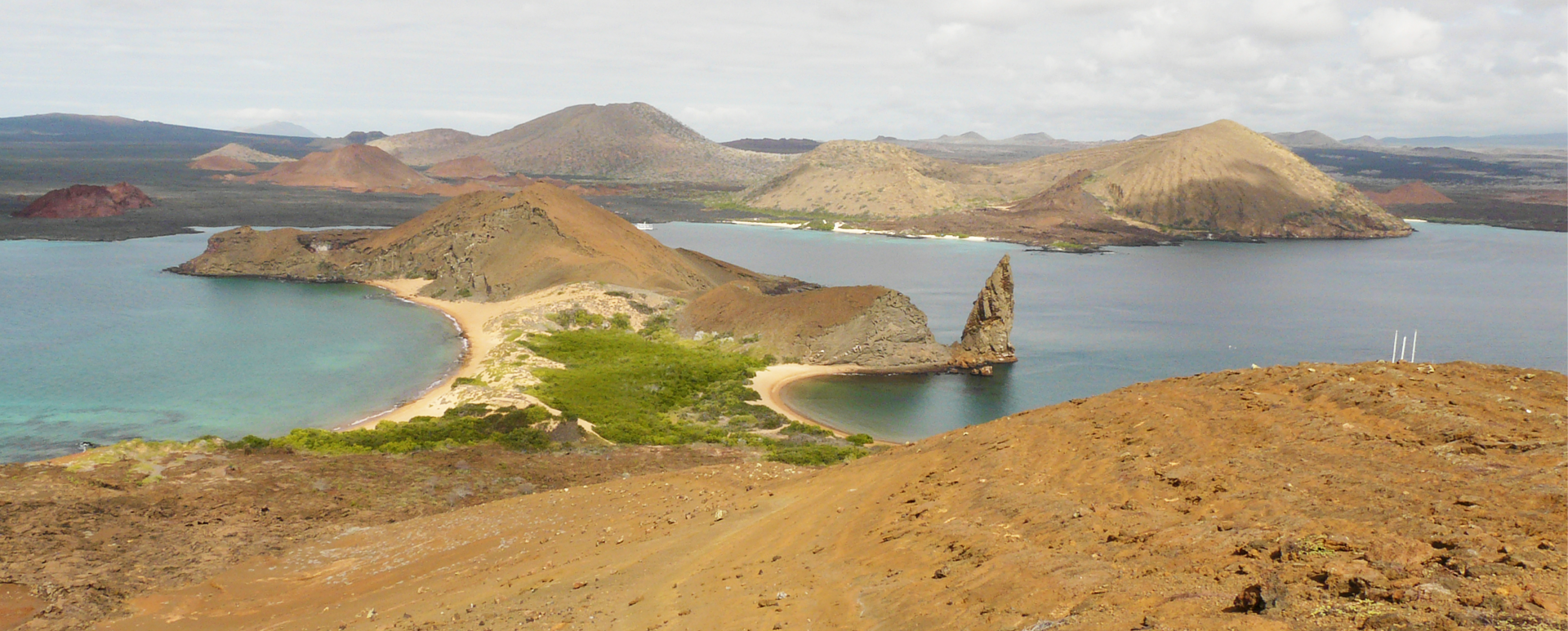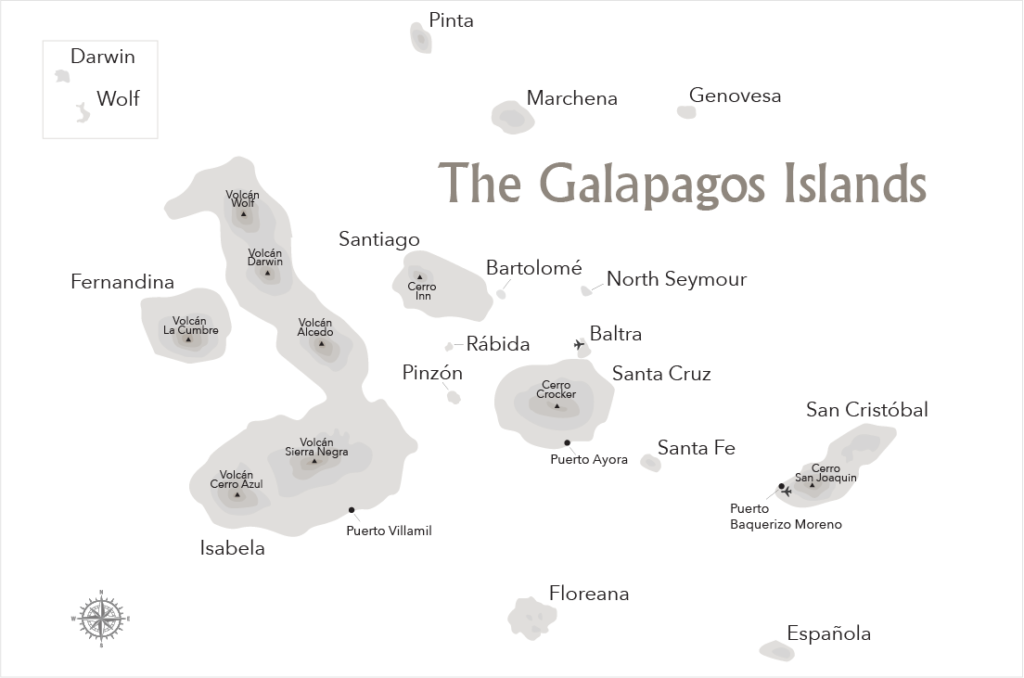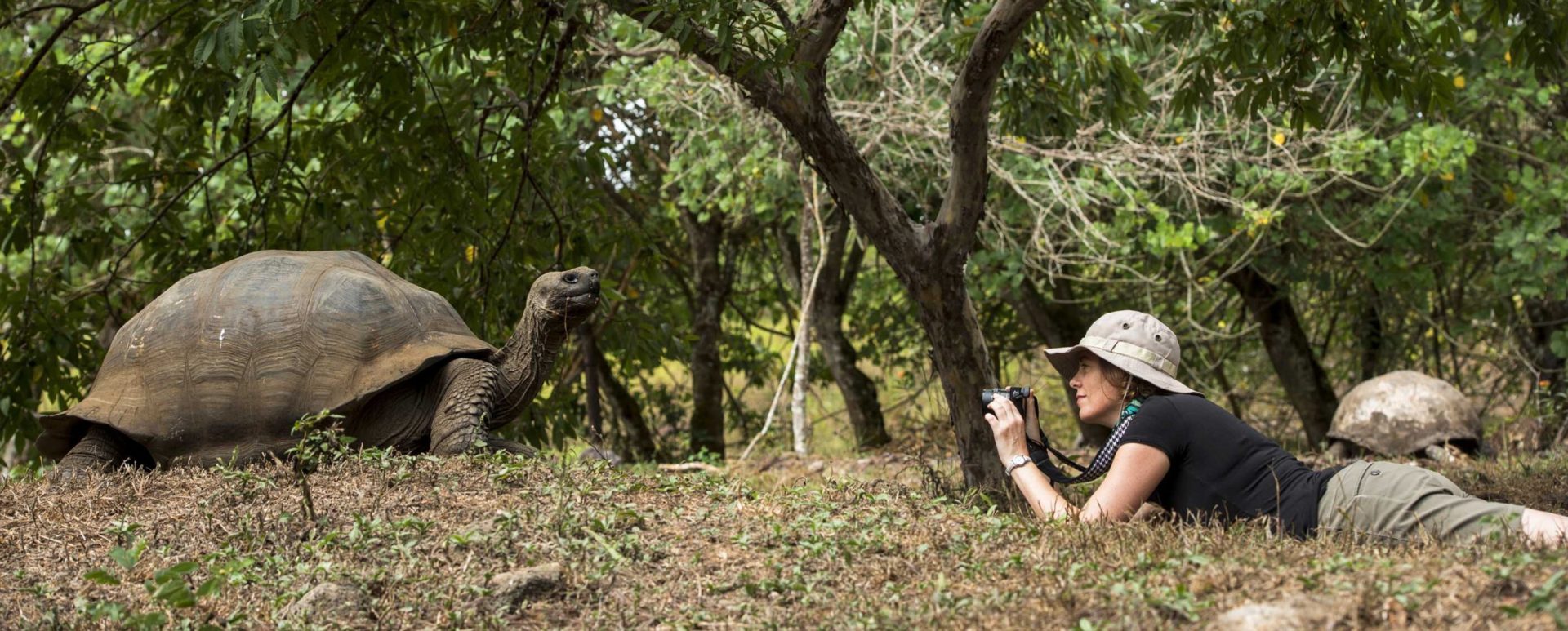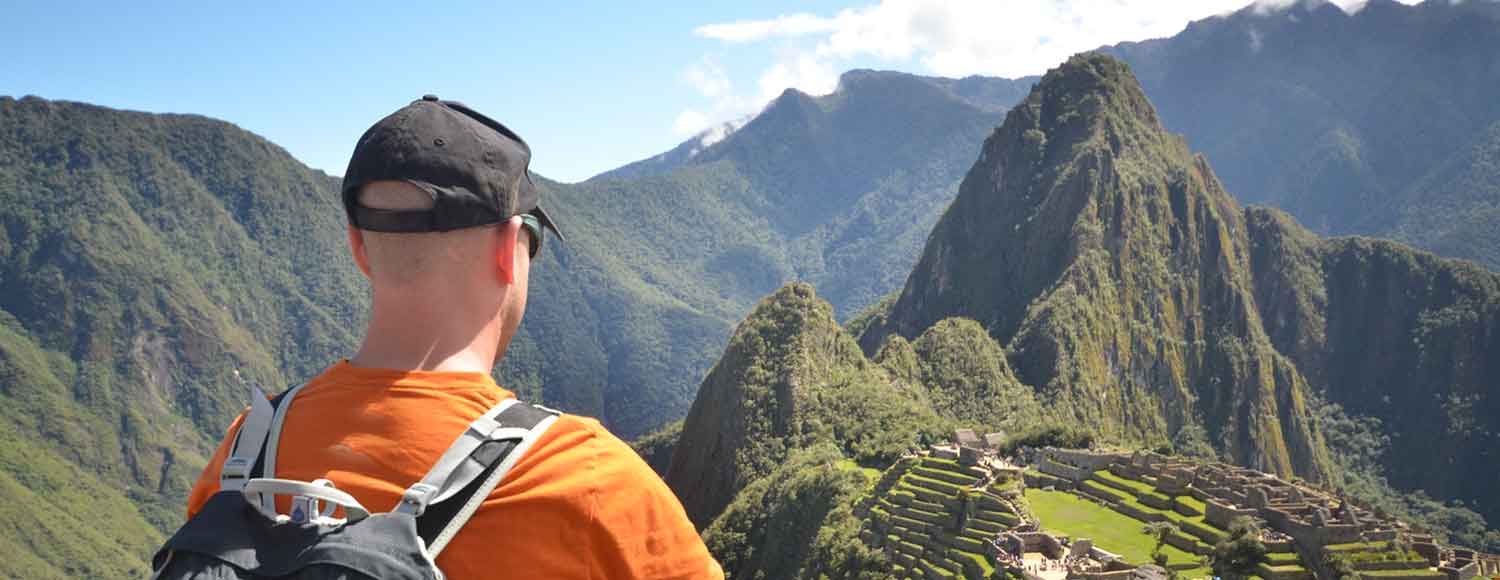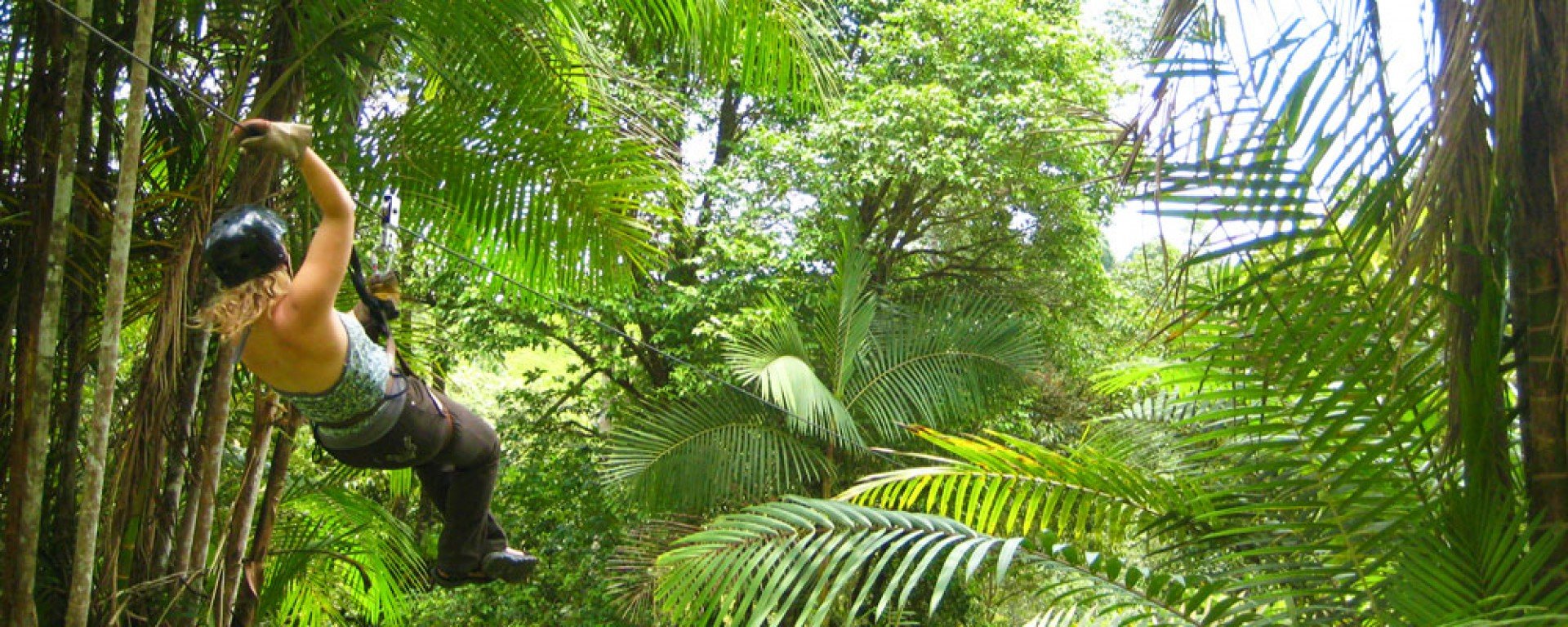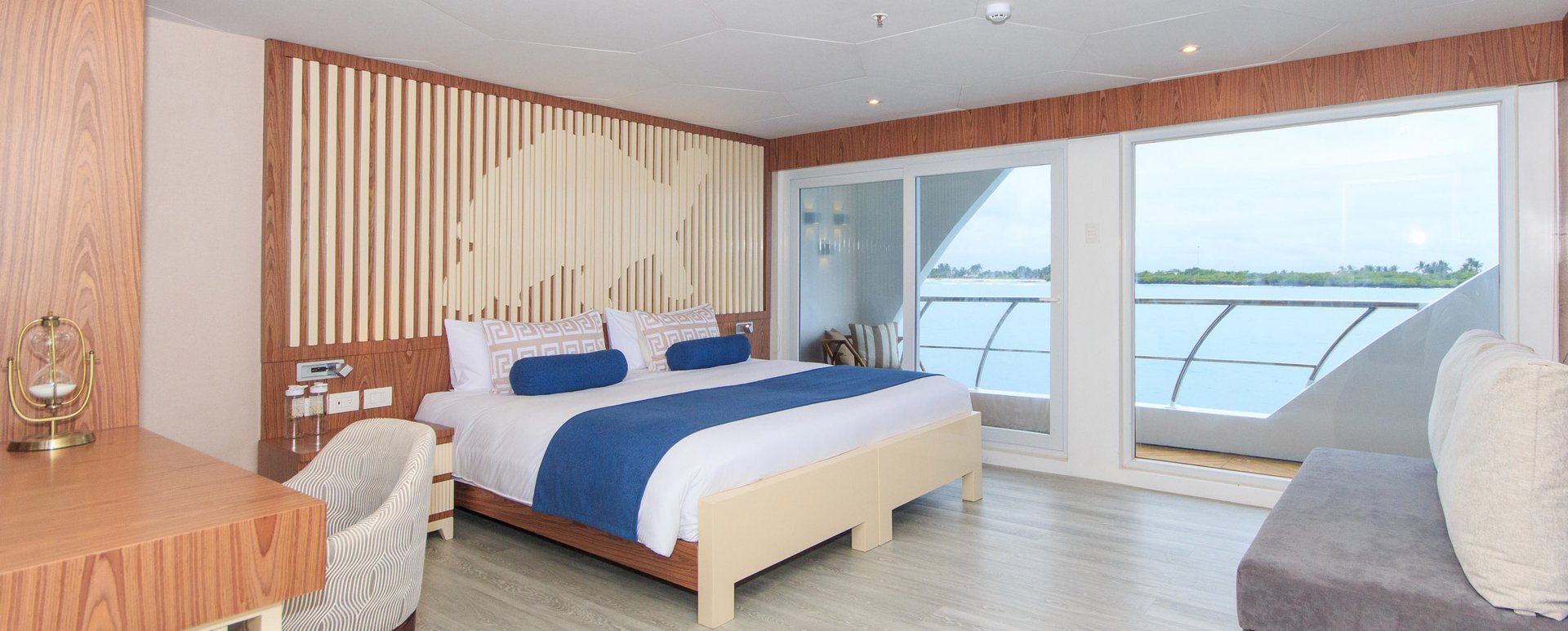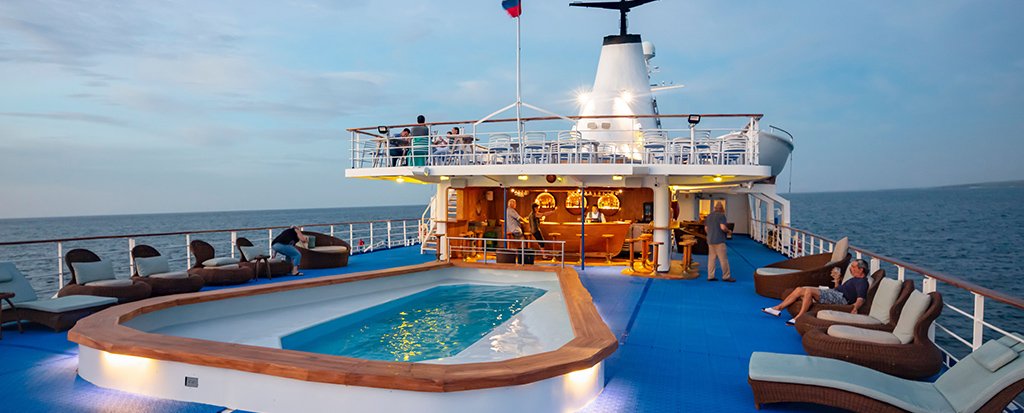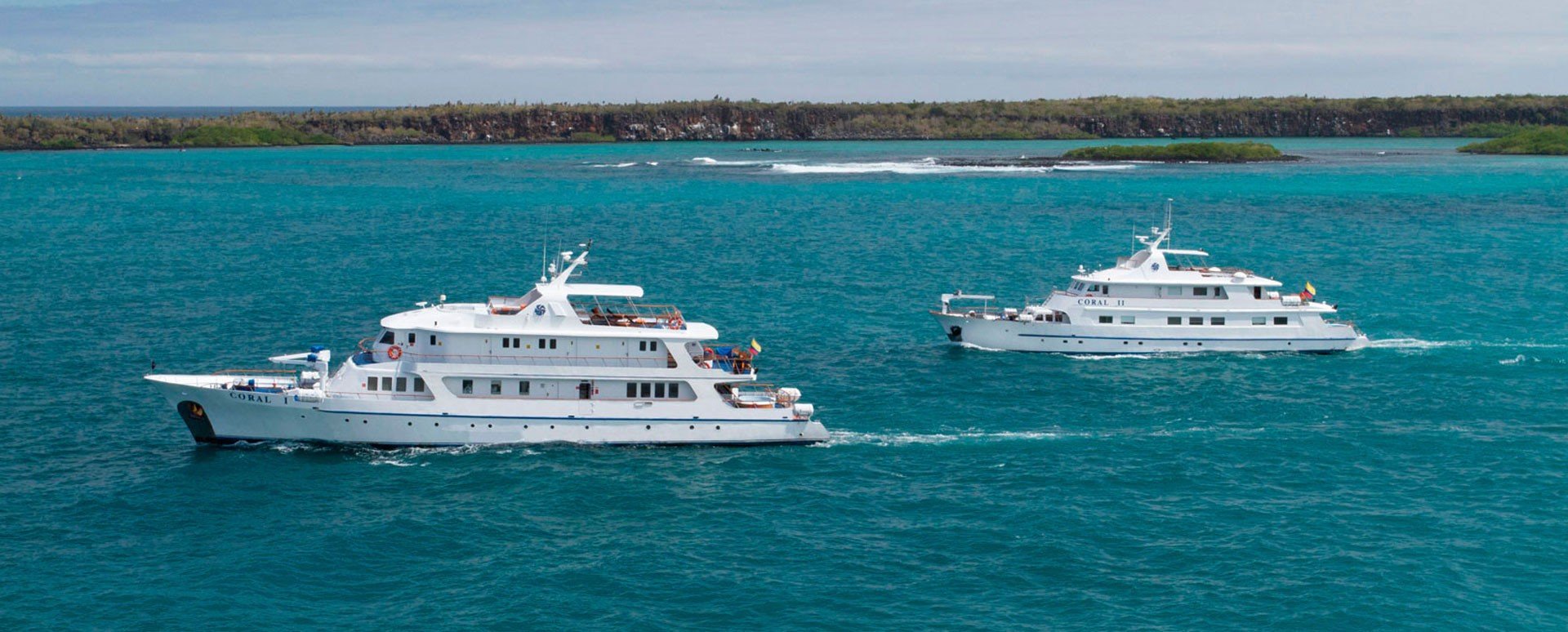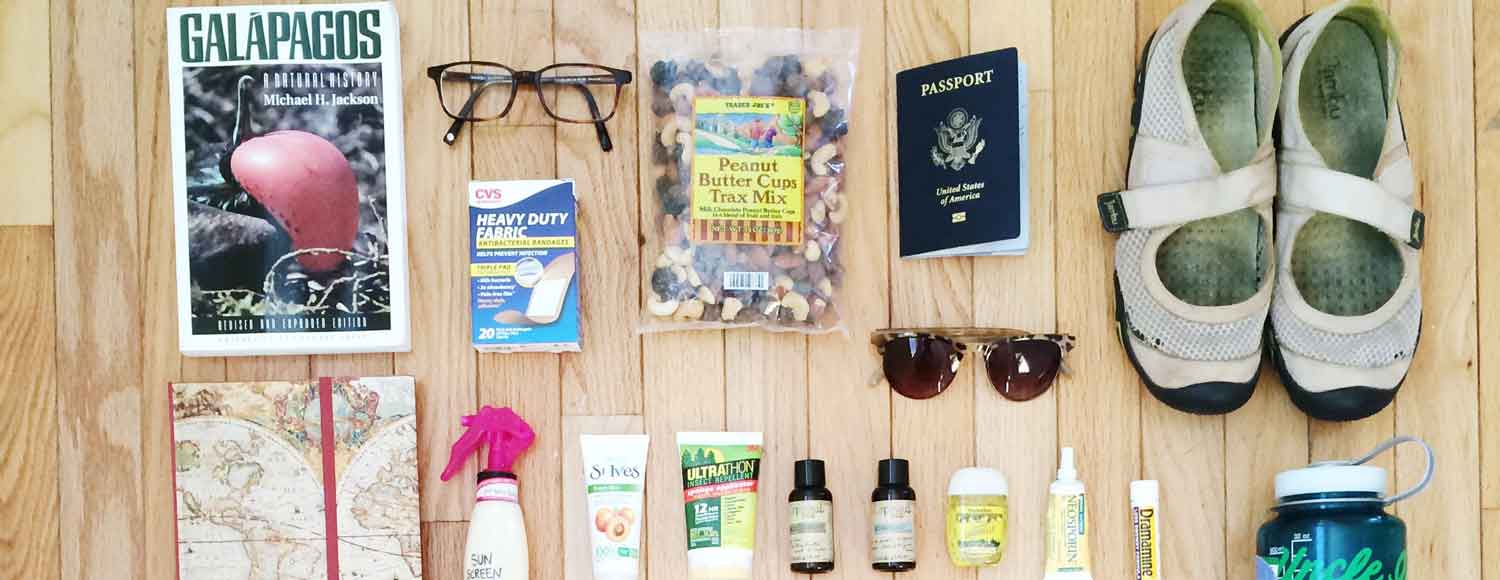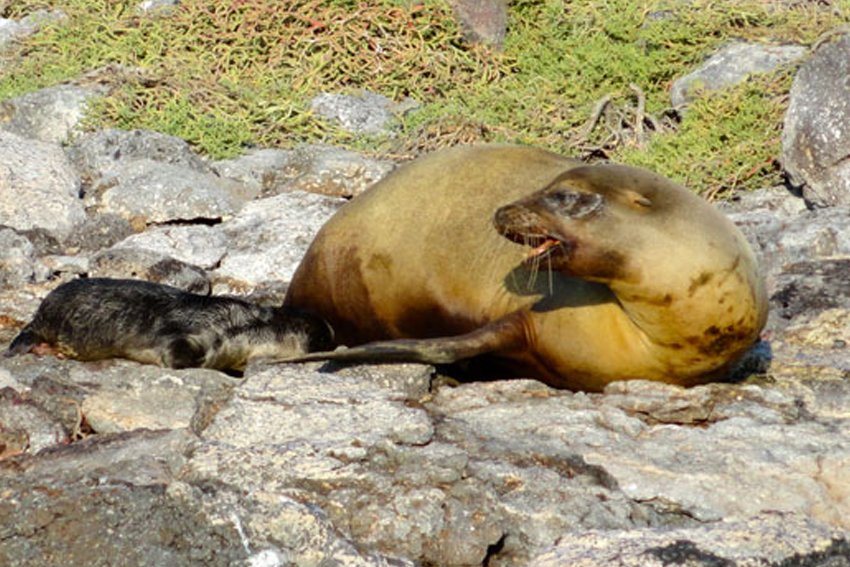
Maria’s Andean Adventure-Day 7: South Plaza & Santa Fe Islands
South Plazas Island
Our trip this morning was to South Plazas island. This was our first chance to disembark from the pangas and set foot on the actual Galapagos islands. The excursion was a dry landing, so we were able to step off the panga onto a dock. The dock itself was covered with bright orange and yellow Sally Lightfoot crabs, and sea lions were swimming and sunbathing on the shoreline rocks. The sea lions were very friendly and playful, and would occasionally jump onto the dock to greet the next boat arrival.
On the rocks that were farther from the shore, we saw a mother sea lion with a newborn baby. Our guide Fatima told us that she estimated the baby had just been born within the past hour.
Also on the island were both land and marine iguanas, in various colors. We were told that as the iguanas’ body temperatures warm up, their scales turn from a dark gray to more vibrant reds and yellows.

We took an easy hike around the rocky island, where we were able to view more of the plant life (lots of prickly pear cacti) and reptiles catching some sun. We also saw a yellow warbler, several finches, blue-footed boobies, and frigate birds.
Upon arrival back at the Galapagos Legend, we were given a small snack and were able to check out snorkel equipment for this afternoon. One of the guides then held a lecture on island evolution in the Galapagos. Specifically, this dealt with the differences between native, endemic, introduced, and invasive species, and what effect each of these has on the Galapagos ecosystem.
Right before the end of the lecture, we were told that there was a dolphin sighting near the boat, so we went to the deck to catch a quick view of them before lunch.
In the afternoon, deep-water snorkeling was available as an activity for anyone who wanted to participate. I decided to participate in the snorkeling excursion, which was actually my first time snorkeling in an ocean. I don’t think I’ve even used a snorkel since I was a little kid, so it took me a while to get the hang of it. Although we jumped off from the panga boat, we were also within sight of a beach, as well as several rocky areas. Near these rocks, we were able to see lots of different fish, including a very cool long, skinny tube-like one. Some other swimmers from our group said they were able to see sea turtles as well.

Santa Fe Island
This afternoon we were taken to Santa Fe island. As we approached, our guide pointed out a group of rays that were swimming near the beach, visible just below the surface of the water. A large group of sea lions greeted us as we disembarked, including several sea lion pups. As we took a hike around the island, our guide also showed us several finches and a different variety of the land iguana.

Back on board, we enjoyed a barbeque on the deck while the sun set. Eventually the sky began to darken, and there were just a few lights on the boat keeping the dock lit. Soon, owls started flying in (pretty close to us!) to try and catch some of the bugs that were attracted to the light. Soon after, all lights were turned off and passengers were invited to the top floor (“Moon deck”) to do some star gazing. One of the Galapagos guides, Alejandro, used a laser pointer to show us some constellations. The visibility of all the stars out on the open ocean, with no lights around, was incredible! It was also great to take advantage of the knowledge that Alejandro had about the star systems. He referred to the constellations from Greco-Roman tradition, although he mentioned a few parallels from cultures such as the Incas and Mayans. I didn’t know about this stargazing experience ahead of time, but one of the high points of the cruise for me was being able to see the night sky so illuminated, without the familiar sources of light pollution. Alejandro pointed out some familiar constellations, like Orion’s belt, but we were also able to see the dimmer stars that made up the rest of the figure: Orion’s head, arms, legs, and dagger, for example. This painted a much clearer picture of what earlier cultures could actually see when observing the stars, instead of the few brightest stars that we are able to pick out from our place in a city or town.

